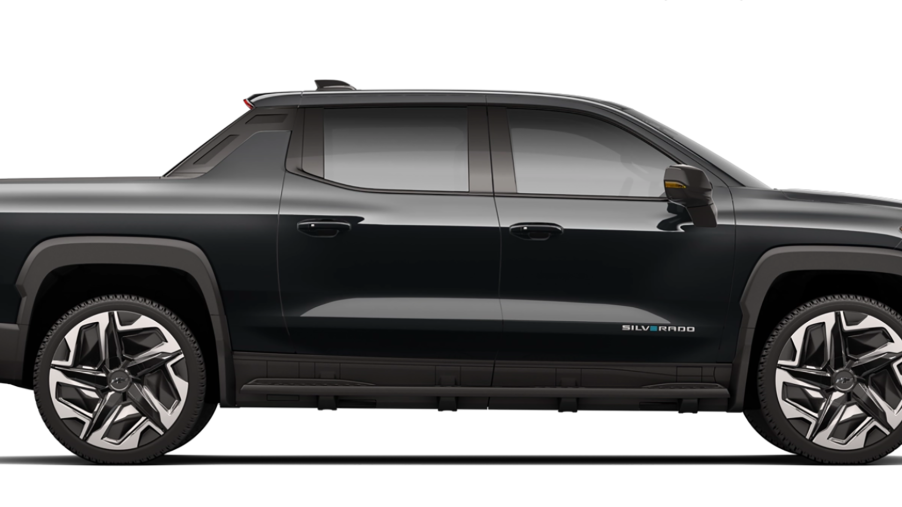
See the Crazy Whipsaw Gas Prices vs Electricity Over 3 Years
We don’t know if this is an economics lesson or endorsement for electric vehicles? What we have is a look at gas prices over the past three years and those of electricity. Two metropolitan cities were chosen; Boston in the east, and San Francisco in the west. The prices are based on 100 miles of range for both EVs and gas-powered vehicles.
Is it still cheaper to run an EV with the rising price of electricity?
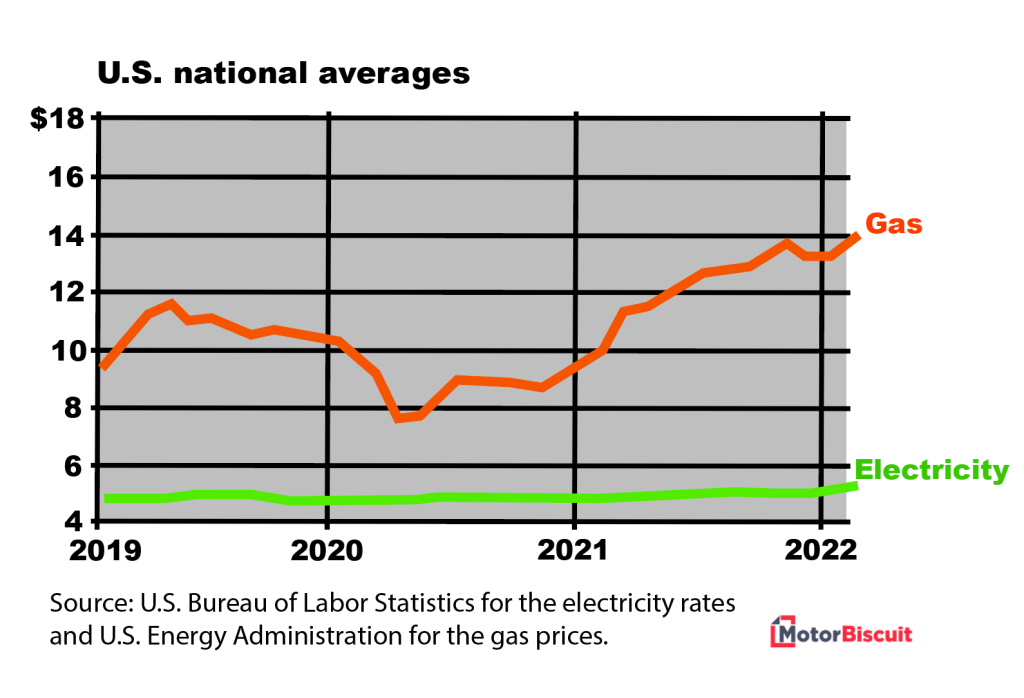
Both sources of energy have increased recently, as we’re sure you are aware. So is it really that much cheaper to charge versus filling up?
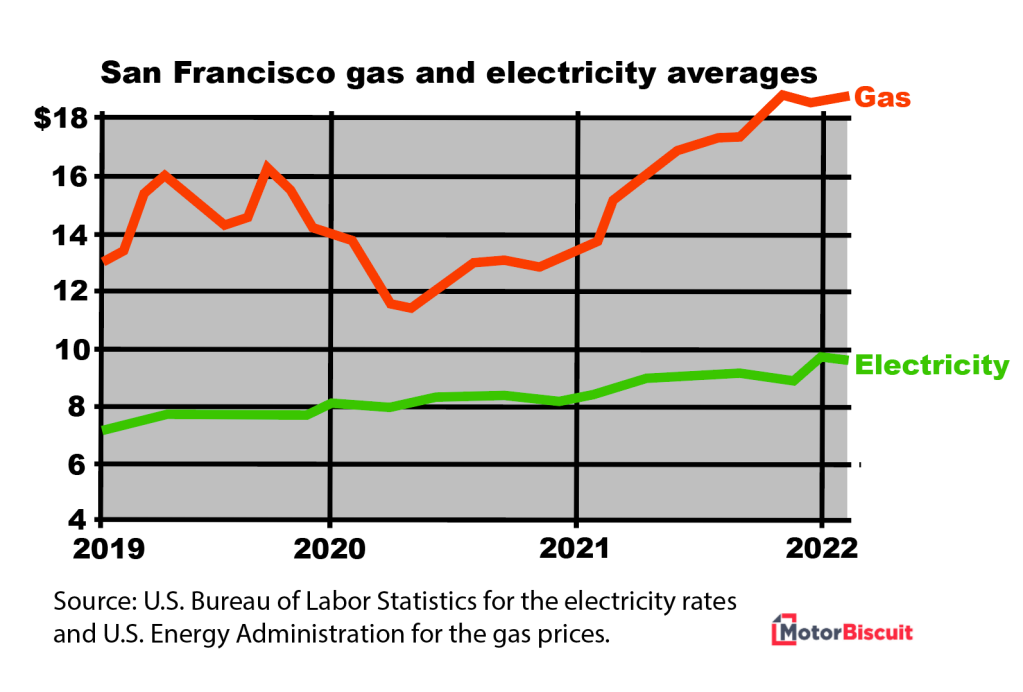
It is interesting to see the whipsaw crazy gyrations that gas prices have seen versus electricity. As a commodity, pricing for crude oil and then refining goes up and down fairly quickly, with little stabilization. But electricity is mostly regulated by the government. That becomes apparent with these graphs.
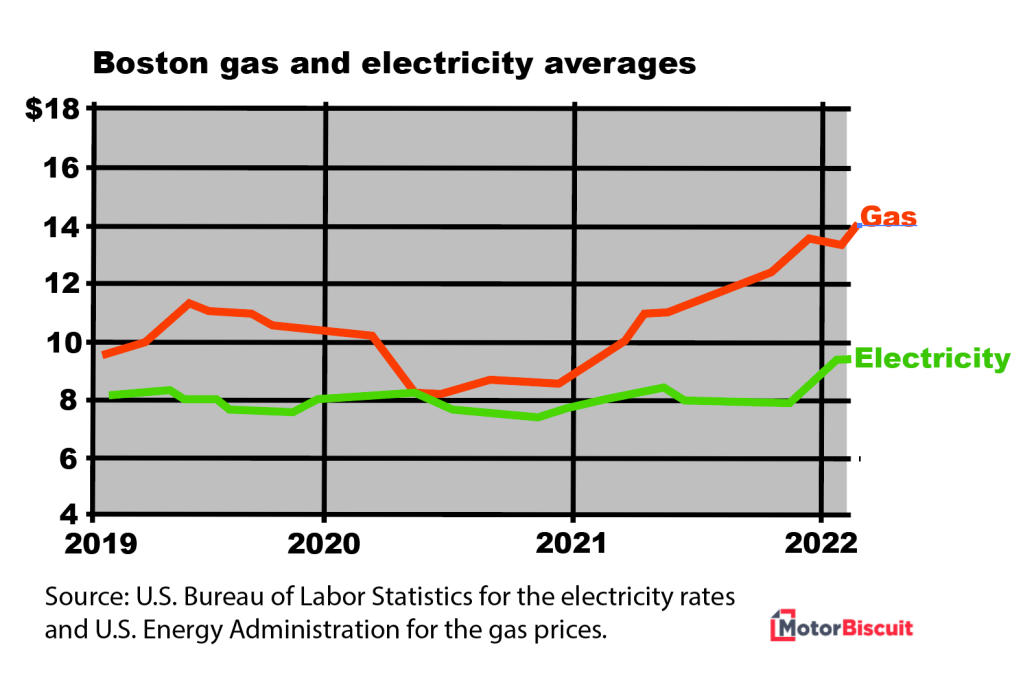
But has it changed as both energy sources have seen increased prices? The first chart provides us with somewhat of a baseline for both. The other two are our east coast and west coast pricing. Both of those regions are seeing rapid adoption of EVs. Not coincidentally, both of those markets have electricity rates higher than the average.
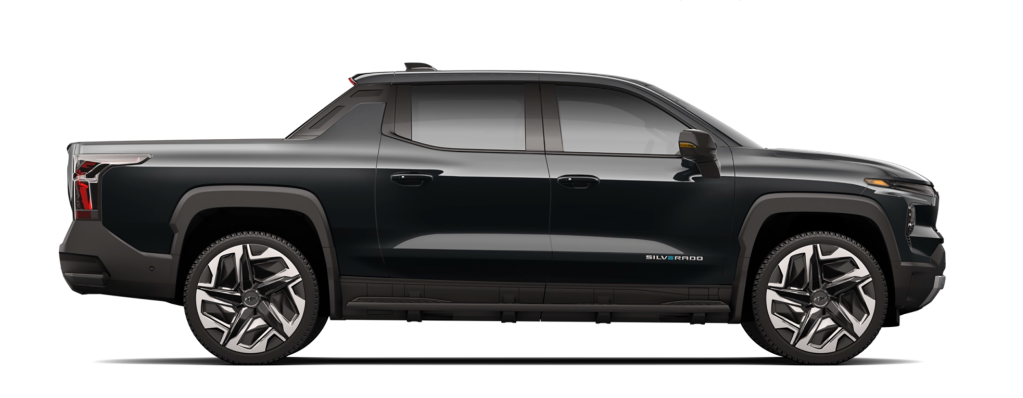
Obviously, from the charts, you can see it is cheaper to go 100 miles in an EV than a gas-powered vehicle. But electricity rates, though rising, have been steady. You know what to expect when you pull up to a charging station or power up at home. Every gasoline fill-up is a bit of a guessing game.
According to CNBC, though prices for electricity will continue to rise, its analysts predict it will never even get close to eliminating the gap between the two energy sources. At least over the lifecycles of the two types of vehicles. And then there is the lessened cost of EV ownership.
Will the price of EVs increase as electricity rates rise?

Estimates put it at $4,700 less for the lifetime of EVs over internal combustion vehicles. But there is also the expectation that battery prices will drop as manufacturing and technology get better. While at the same time, higher volumes will also lower prices.
Now for some math. While 2022 numbers aren’t in, the EPA says the combined fuel-economy rating for ICE vehicles was 25.7 miles per gallon in 2020. So that means consumption of 3.9 gallons of gas.
For EVs, the EPA uses a charge of 33.7 kWh to determine the equivalent. It considers that number to be the equivalent energy in a gallon of gas. In 2022, the MPGe is about 97. That means 34.7 kWh of the vehicle’s charge was used.
It’s about gasoline versus kWh
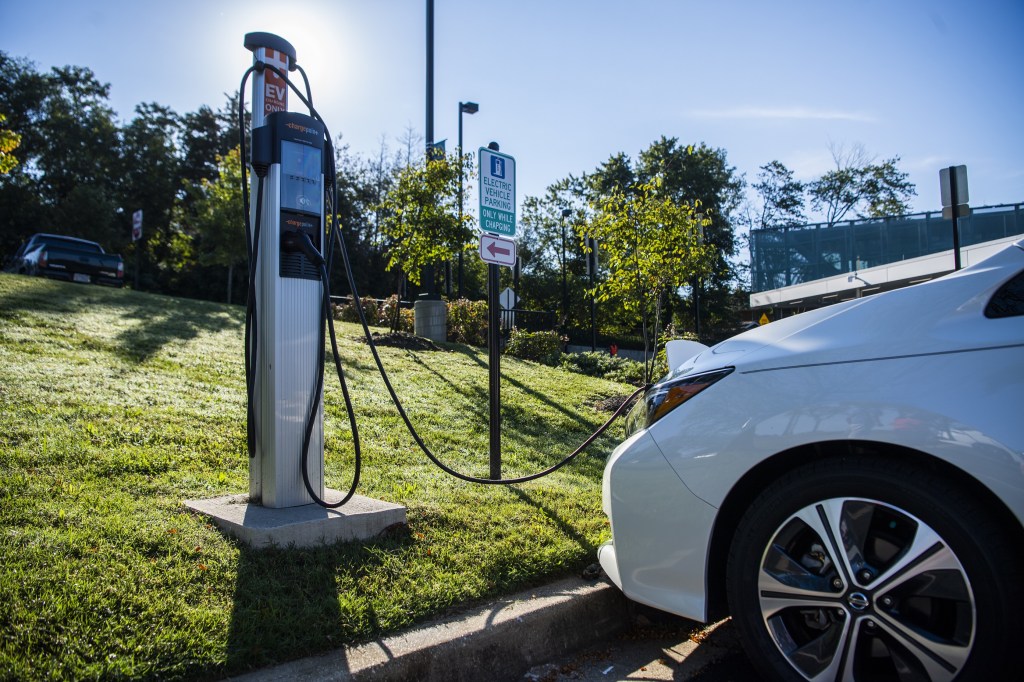
That is how the above charts were compiled. Essentially, it compares the price of 3.9 gallons of gas versus 34.7 kWh of electricity for three years. Now the question becomes, “how well will your ICE car’s value hold as the price of gas continues to soar, while electricity stays relatively the same?
Because at some point, ICE vehicles will become much less desirable. How long should you hold out before selling your ICE car or truck while it still has value? Because at some point, owning an ICE vehicle will be a costly novelty, and not a form of transportation anymore.



